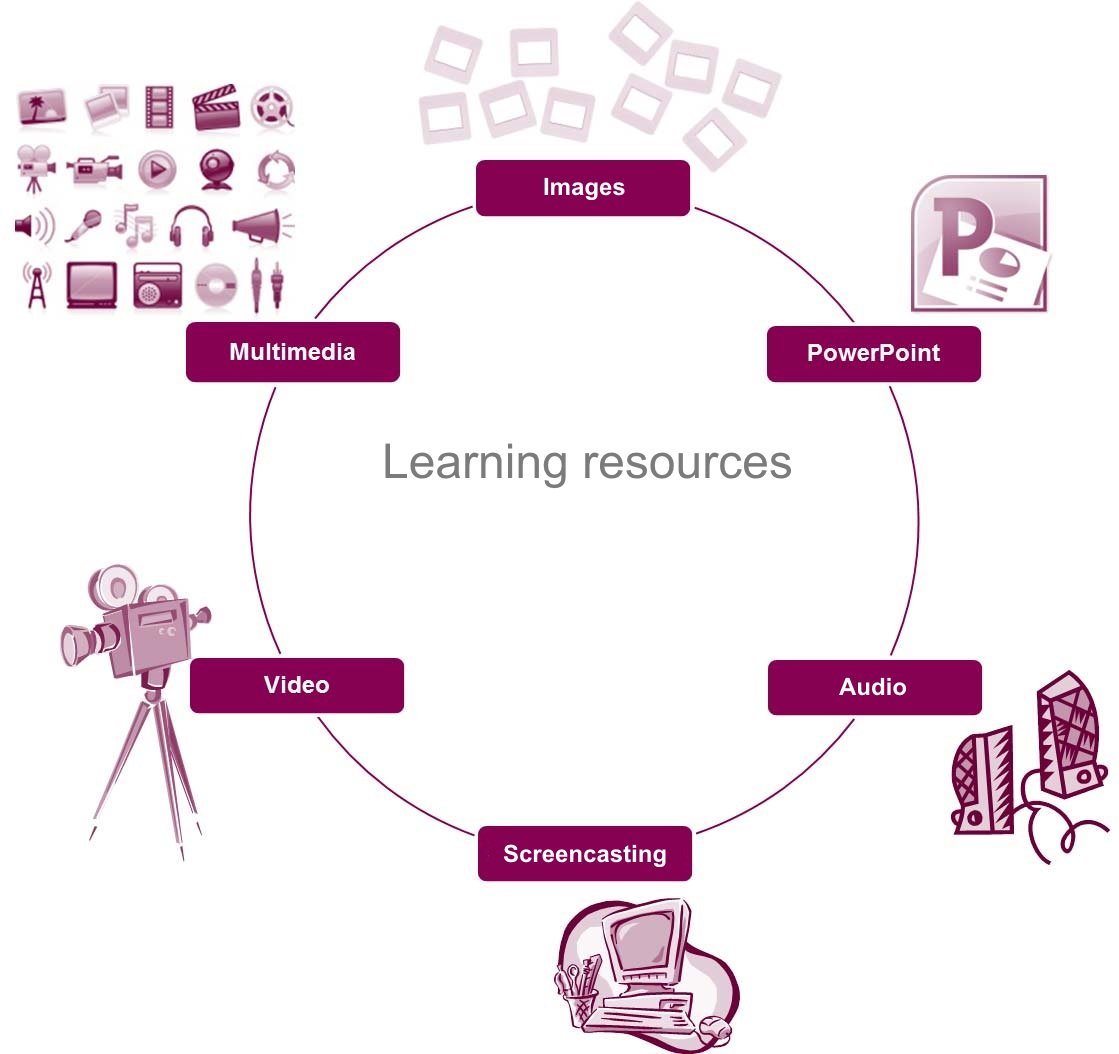Create your own learning resources
By learning resources, we mean a "component" or a "building block", small or large, of a course. This could be pictures, films, screen recordings, Powerpoint presentations, lectures and different types of multimedia productions where different forms of media are often combined and may also contain interactivity. Read on about what to consider when planning and creating your own digital resources, for example recording a lecture.
Create resources
You can create your own learning resources. There are many ICT tools and web services that make this possible. Screenpal, Jing, Audacity, Moviemaker, and Voicethread are examples of services where you use Powerpoint as a starting point for creating your learning resource. Several of them are free of charge and you can upgrade by paying for a more advanced version.
The type of ICT service you choose will depend on what type of learning resource you want to create and how it is going to be used and published. It is important that you take a stand regarding your copyright and consider whether you want to share your learning resources with other people. This can be done in different ways, for example, by using Creative Commons licensing.

What, why and how?
The type of learning resource you choose to produce and what IT tool you work with will depend on what you are going to do. The five arrows are supposed to symbolize a flow process when developing a learning resource, or rather when developing a course.
The educational context is always the starting point for deciding what type of learning resource is needed.

By considering the following questions, you will get a clearer picture of what type of learning resource will best suit your purposes:
- Objective and purpose – What are the course objectives? What do you want to achieve and what is it the students are to learn? What is the purpose of the learning resource in this context?
- Working methods – How should tuition be structured so as the meet the expected learning outcomes? Is the learning resource going to: convey knowledge? Give opportunities to practise? Give opportunities to collaborate and interact?
- Media format – What media formats are there? Which format meets my needs?
ICT tools – What ICT tool shall I choose?
Publication – Is the learning resource going to be accessible for everyone or just for some people? Do you want to be able to embed it in or upload it on, say, a learning platform? Do you want to share this learning resource with others? If so, how is it to be used?
Recording your lecture
You can record your lecture in different ways, either as a film or by using a Powerpoint presentation which you combine with another form of media: film sequences, pictures, a recording of your voice or a film of yourself via a web camera.
You can also create screen recordings, i.e. show something that you do on your screen in motion film format. These can be used to give instructions, for example, or to explain something that is difficult.
Support
If you want to record your lecture or create a learning resource for a course but are not sure where to begin, feel free to contact the Educational Technologists for help. We have sound and film studios available where you can record a lecture with the right equipment and software.
Open Educational Resources (OER)
To summarize Atkins, Brown and Hammon's (2007)* description, open educational resources are teaching, learning and research materials in any medium that reside in the public domain and have been released under an open license that permits the access, use, repurposing, reuse and redistribution by others with no or limited restrictions.
OER can include full courses or programs, student guides, course materials, textbooks, research articles, videos, assessment tools, interactive materials, such as simulations and role plays, databases, software, apps and any other educationally useful materials. Try our quiz to test your knowledge and learn how to find OER.
OER are not really “free”. Instead they are resources that someone or some organization, somewhere has spent time and effort to create. The copyright owners have then shared their creative work with an open license, such as Creative Commons, which is a standardized way to grant permission and state restrictions for how the work is to be used and shared.
Find OER materials
Before you start to produce an educational resource for your course, you may want to investigate if someone else has already done what you need. There are, of course, many ways in which one might go about finding the right educational materials for a planned lesson. Continue reading to see the search process of two different teachers to find course materials, the first using the search engine Google with advanced and normal search functions and the second using OER Commons.
- Case 1 – Google search (only available in Swedish)
- Case 2 – OER Commons
Common resources for OER
Lastly we can offer some links to the most common resources of OER, most of them specific to medical education that can help you get started.
Reference
* Brown, J., Seely, Hammond, A. L., & Atkins, D. E. (2007). A Review of the Open Educational Resources (OER) Movement: Achievements, Challenges, and New Opportunities. Retrieved from the website of Issuelab.
